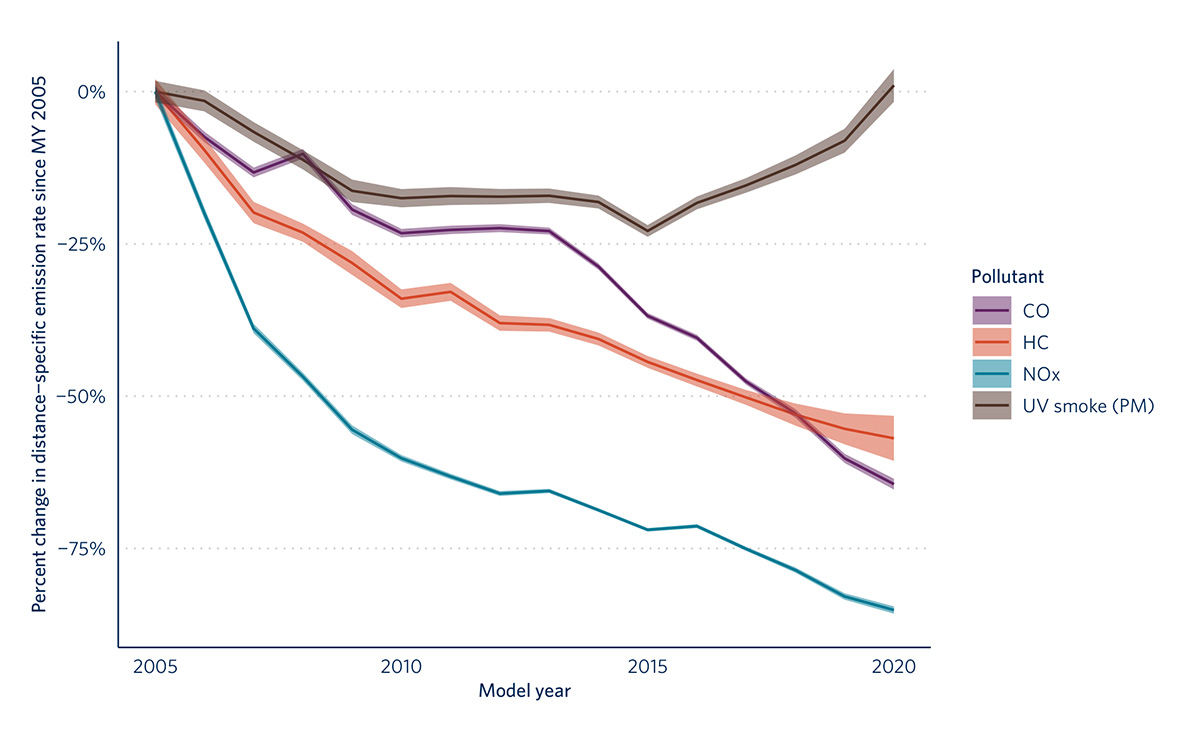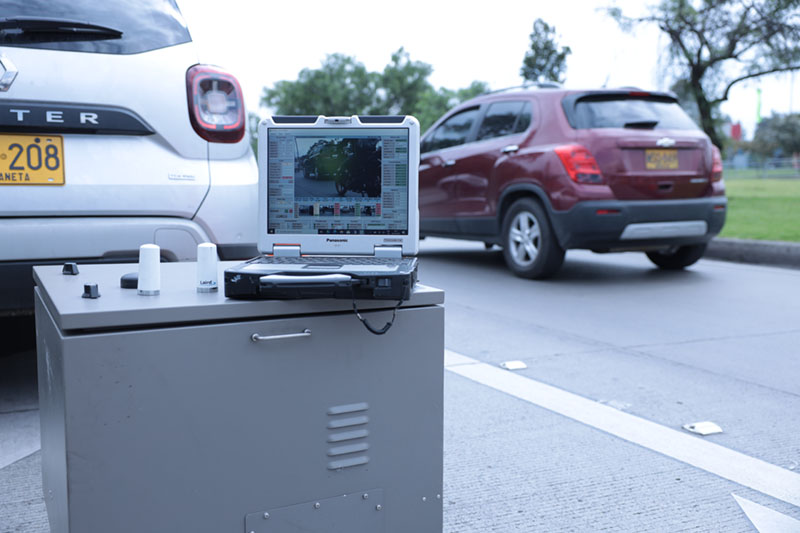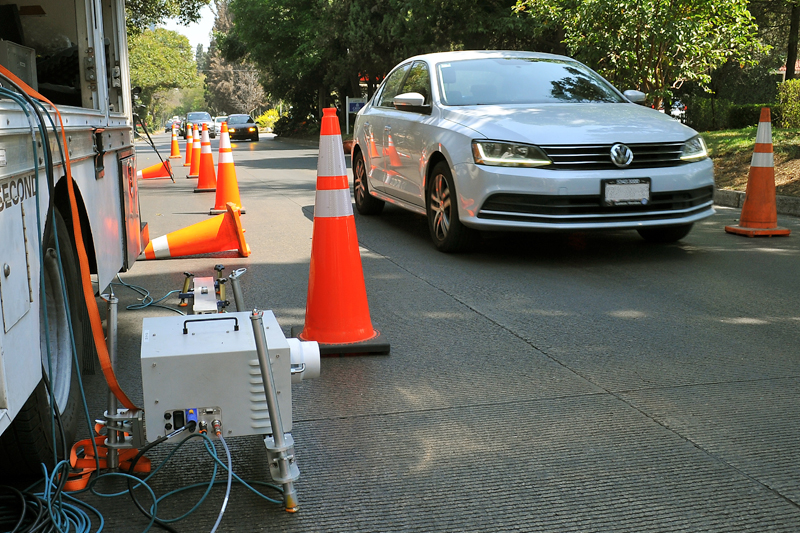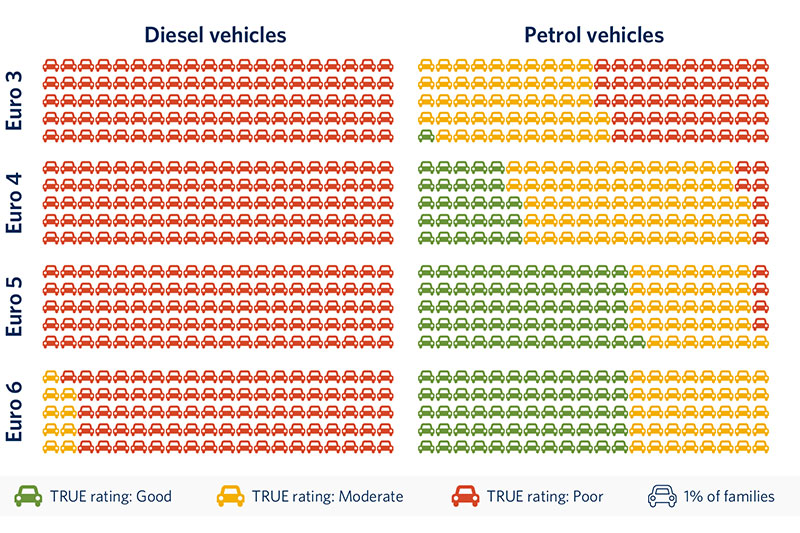U.S. gasoline passenger vehicle particulate matter emissions are rising, warns new report

U.S. vehicle tailpipe particulate matter (PM) emissions are rising across light-duty vehicles (LDV) and trucks, correlated to the increased use of gasoline direct injection (GDI) technology, and reversing much of the progress in the last 20 years warns new TRUE Emissions analysis.
TRUE partner, the International Council on Clean Transportation (ICCT), identified that ultraviolet (UV) smoke, or the ‘smoke factor’ which is used as a proxy for particulate matter emissions to indicate changes to the emissions levels, began to increase with models built in 2015 and continue to rise through to the 2020 model year. The newest model years analysed (between 2018 and 2020) show similar UV smoke averages to vehicles from model year 2005.
This increase is related to an uptake in GDI technology, which represented nearly half (50%) of all sales LDV sales by 2015, growing from a market share of just under 10% in 2010. Although GDI vehicles, on average, demonstrate better fuel economy, the limited existing research indicated early engines using the technology showed comparatively high PM emissions.
The data set analysed included 7.4 million measurements of LDVs and 11.4 million measurements of light-duty trucks (LDTs) collected between 2015–2022 in Colorado and Virginia. Compared to the trend of rising average of UV smoke measurements, the average CO, HC, and NO emissions in each model year show clear and consistent downward trends, and the average emissions of model year 2020 vehicles are between 66% and 86% lower than from 2005.
The report further compares the most popular LDV and LDT models, determined by their occurrence in the dataset. For both vehicle categories, the model groups with the highest UV smoke averages predominantly use GDI technology.
Particulate emissions pose a significant environmental health hazard and significantly contribute to increased rates of respiratory and cardiovascular disease. The impacts are most significant for communities near high-traffic areas and contribute to inequitable health outcomes.
The U.S. Environmental Protection Agency (EPA) has regulated tailpipe emissions since the 1970s, with emission limits for PM becoming more stringent over time. In April 2023, the EPA announced plans to further lower PM limits for LDVs with the proposed multipollutant emission standards for light- and medium-duty vehicles of model year 2027 and later. The report’s findings highlight the importance of implementing a stricter PM emission standard to address the environmental justice and health impacts associated with gasoline vehicle emissions.
Gasoline particulate filters (GPF), an aftertreatment device, can be added to GDI vehicles at a manufacturing cost of $51–$166 per vehicle and could reduce PM emissions by 97%–100% compared to non-GPF equipped vehicles. The adoption of GPFs in the U.S. vehicle fleet would help to counteract the observed increase in PM emissions from gasoline vehicles.
Sheila Watson, Deputy Director of the FIA Foundation, said: “This analysis shows how important it is that U.S. policymakers turn their eyes to the serious and widespread public health crisis created by particulate matter and introduce tighter regulation as a matter of urgency.”
Read 'Particulate matter emissions from U.S. gasoline light-duty vehicles and trucks'








